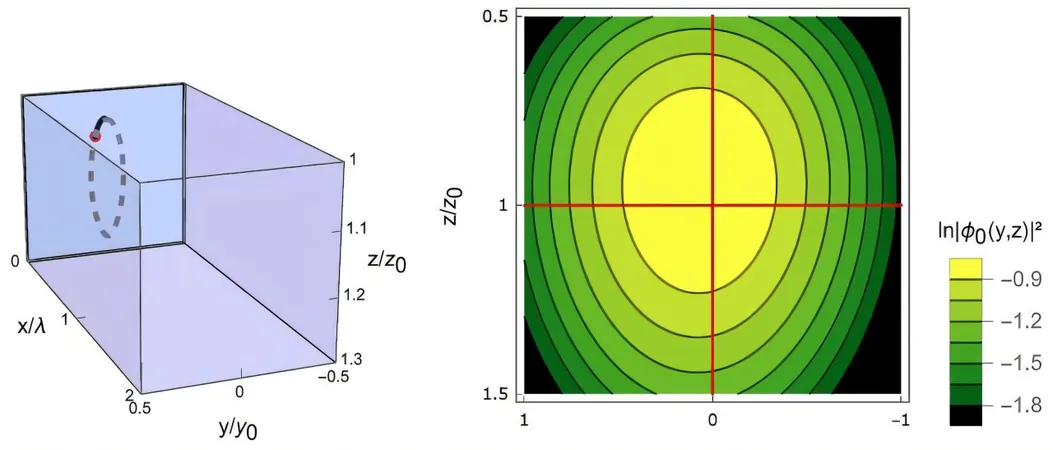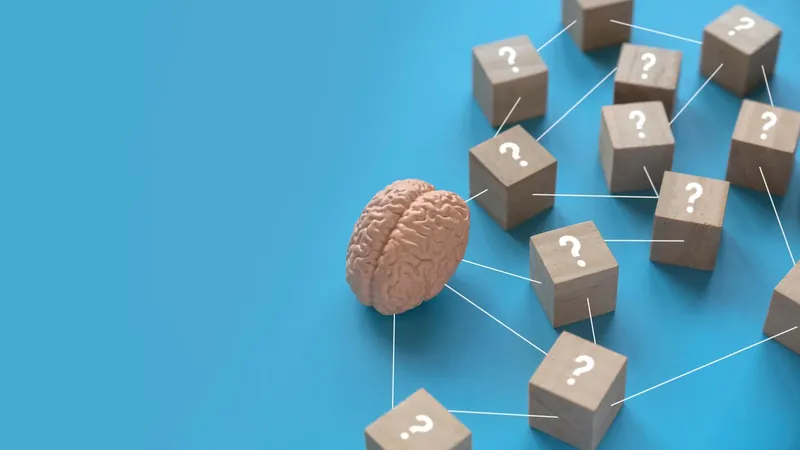
Unlocking the Mysteries of Quantum Spirals: A Game-Changer in Electron Research
2025-06-13
Author: Sarah
Revolutionizing Electron Pathways with Quantum Chirality
A groundbreaking new platform is shaking up our understanding of how electrons navigate chiral systems, opening doors to fresh insights into quantum phenomena. This innovative technology is not just limited to physics; it bridges the realms of chemistry and biology, highlighting the ongoing second quantum revolution that encourages interdisciplinary collaboration.
A Surprising Discovery in the Late '90s
Back in the 1990s, Ron Naaman and David Waldeck uncovered a puzzling aspect of electron behavior in chiral molecules. Initially, their findings showed an almost negligible asymmetry of less than 0.01% when spin-polarized electrons interacted with left- or right-handed molecules. Skeptics quickly dismissed this effect as trivial—until they tried something new.
In 1999, the duo switched gears by exploring organized films of chiral molecules instead of isolated ones. The results were astonishing: the asymmetry surged to between 10% and 20%, over a thousand times greater than expected! This phenomenon has left researchers in a state of perplexity for over two decades.
The Chiral-Induced Spin Selectivity Effect Explored
Known as chiral-induced spin selectivity (CISS), this effect has far-reaching implications. It's present in key biological processes, from photosynthesis to cellular respiration. Yet, despite extensive research, understanding the underlying mechanism of CISS remains elusive.
Introducing a Programmable Quantum Platform
Enter Jeremy Levy and his team from the University of Pittsburgh, who have revolutionized the study of chiral systems with their programmable quantum platform. By manipulating the oxide interface between lanthanum aluminate and strontium titanate, they can craft electron pathways into complex spiral shapes at the nanoscale, allowing for unprecedented control in studying quantum transport.
The Challenge of Interacting Quantum Systems
Unlocking the mechanisms behind CISS is a broader representation of the challenges posed by interacting quantum systems. Understanding these systems is crucial for advancements in quantum chemistry, high-temperature superconductivity, and drug discovery, yet the interplay of many particles creates a murky complexity.
Simulating Quantum Effects with New Tools
Researchers have found a powerful ally in analog quantum simulation, which involves creating controllable systems that mimic the desired physics without grappling directly with complex equations. The Pittsburgh team stands at the forefront, employing advanced methodologies to explore the quantum behaviors of chiral systems.
Unveiling Quantum Surprises
The engineered waveguides have already revealed unexpected phenomena, including enhanced electron pairing that withstands extremely high magnetic fields—far exceeding typical thresholds. Additionally, unusual oscillations in electrical conductance suggested new kinds of quantum interference, offering tantalizing glimpses into the intricacies of chiral quantum transport.
Future Prospects and Limitations
While the Pittsburgh team's work opens exciting avenues, limitations persist. Operating at millikelvin temperatures and using inorganic materials means the findings may not directly apply to biological systems. However, they believe their insights could illuminate the broader landscape of fundamental quantum phenomena.
A New Era of Collaboration
This endeavor encapsulates a seismic shift in condensed matter physics—transitioning from simply discovering materials to programming quantum matter itself. The reconfigurable nature of their platform promises a deeper dialogue between physicists and chemists, enabling systematic exploration of chiral quantum mechanisms.
Conclusion: Tapping into the Quantum Frontier
As researchers unveil the secrets of these engineered systems, the tantalizing question remains: Will they finally unravel the mysteries of the CISS effect? One thing is certain: this programmable platform is set to redefine our understanding of electron behavior in chiral systems, paving the way for breakthroughs that bridge chemistry, physics, and biology.





 Brasil (PT)
Brasil (PT)
 Canada (EN)
Canada (EN)
 Chile (ES)
Chile (ES)
 Česko (CS)
Česko (CS)
 대한민국 (KO)
대한민국 (KO)
 España (ES)
España (ES)
 France (FR)
France (FR)
 Hong Kong (EN)
Hong Kong (EN)
 Italia (IT)
Italia (IT)
 日本 (JA)
日本 (JA)
 Magyarország (HU)
Magyarország (HU)
 Norge (NO)
Norge (NO)
 Polska (PL)
Polska (PL)
 Schweiz (DE)
Schweiz (DE)
 Singapore (EN)
Singapore (EN)
 Sverige (SV)
Sverige (SV)
 Suomi (FI)
Suomi (FI)
 Türkiye (TR)
Türkiye (TR)
 الإمارات العربية المتحدة (AR)
الإمارات العربية المتحدة (AR)